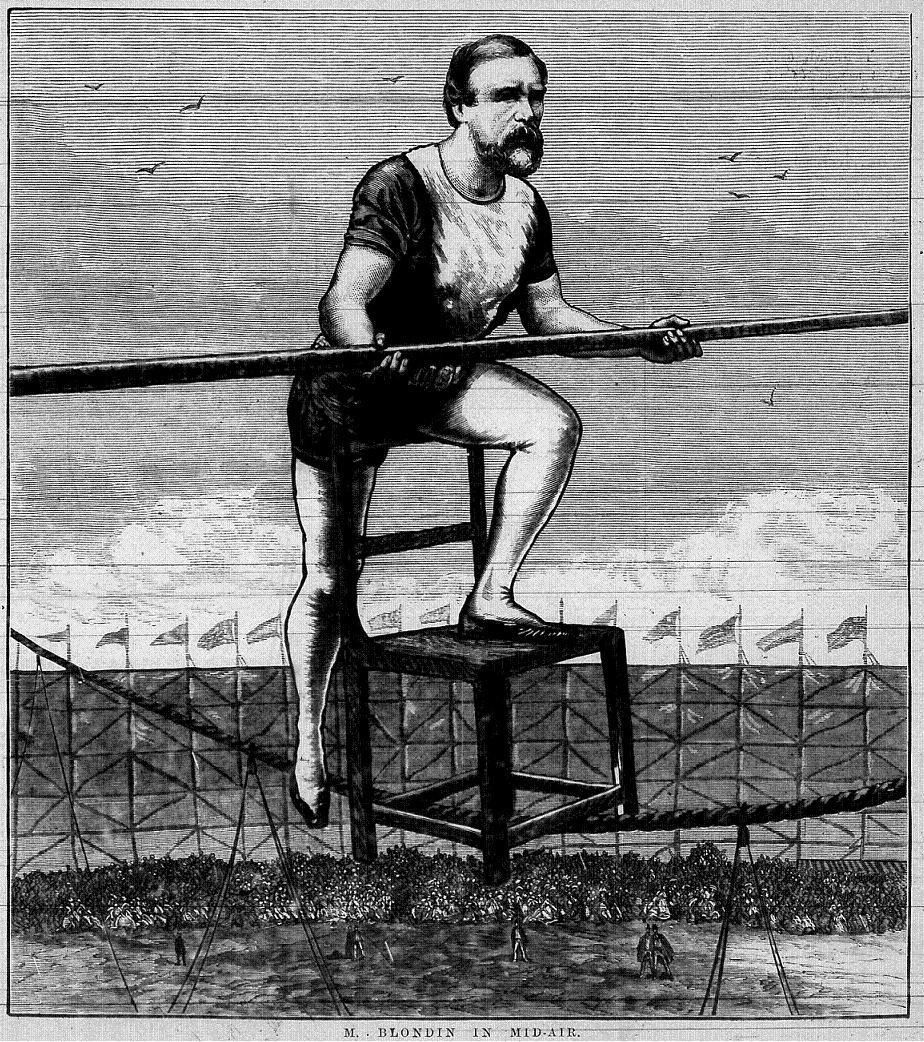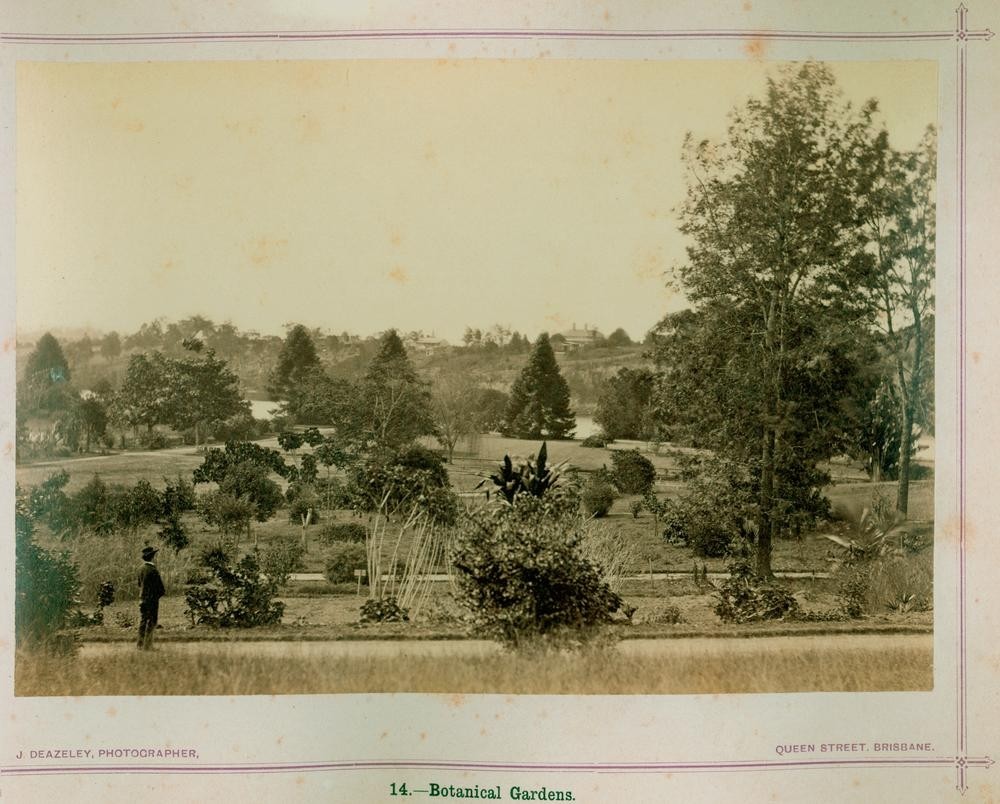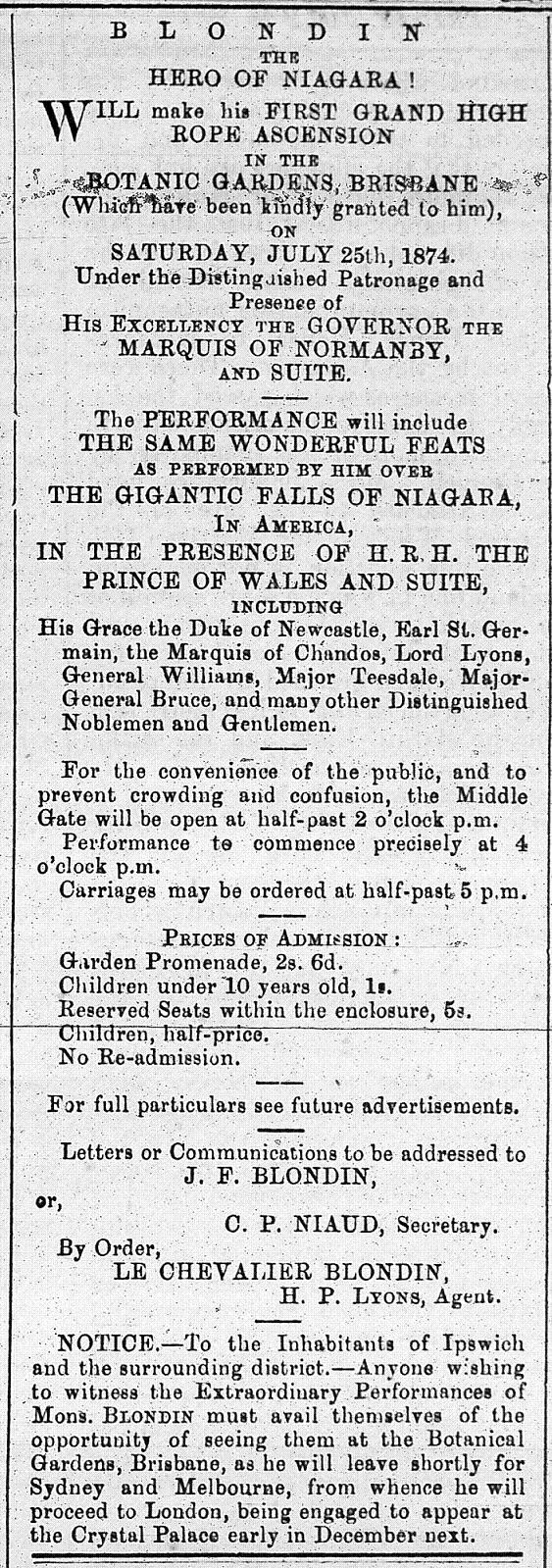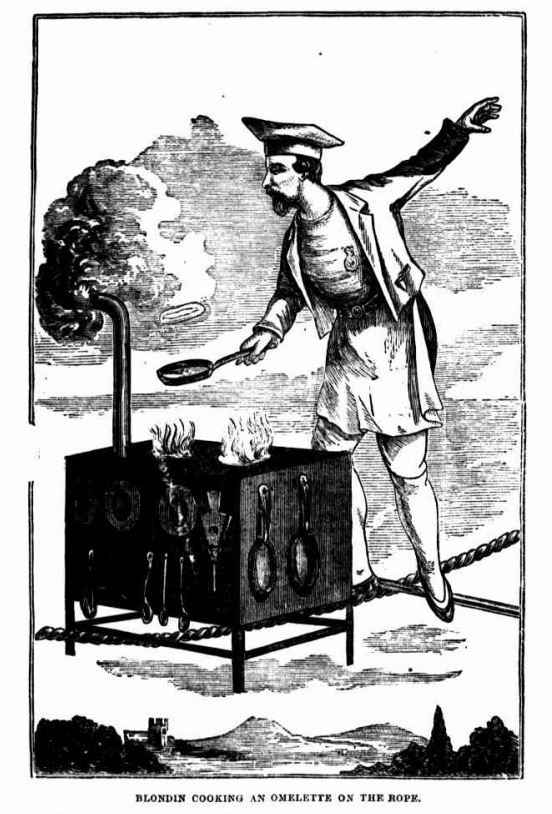The 'Great Blondin' entertains Brisbane : July 1874
By Myles Sinnamon, Project Coordinator, State Library of Queensland | 30 July 2012

A sketch of the Great Blondin during his performance in Melbourne. Published in the Australiasian Sketcher, 3 November 1874
The Great Blondin was a celebrated French tightrope walker and acrobat. Born Jean-François Gravelet in 1824, he won worldwide acclaim in 1859 when he tightrope walked across Niagara Gorge on the American-Canadian border. An estimated crowd of 25,000 witnessed this feat as Blondin crossed the 340 metre long rope, 49 metres above the water. During his lifetime he was to cross Niagara Gorge on over 300 occasions.
In 1874 Blondin visited Australia. His first performance was to be given at the Botanic Gardens in Brisbane on 25 July 1874. The day before the performance it was reported that Blondin was carefully checking the installation of the tightrope. The rope was suspended 24 metres above the ground and reached 76 metres in length. At either end of the rope were two tall masts with two small platforms. The rope itself was reported to be as thick as a man's wrist and was manufactured in Spain especially for Blondin.

Botanic Gardens, Brisbane, 1874
Advertisements were published the Brisbane Courier and Telegraph newspapers promising a spectacular event -
"BLONDIN - HERO OF NIAGARA - Will make his first grand high rope ascension"

Advertisement from the Brisbane Telegraph newspaper on 24 July 1874
Over 3,500 people purchased tickets to officially attend Blondin's first Australian performance, however there were a large number of spectators gathered at various vantage points around the Botanic Gardens, including Kangaroo Point. Blondin first appeared dressed in chain mail or amour as if he were a knight and danced across the tightrope to the strains of a band. He then changed out of the knight's costume and then appeared as an acrobat and performed various gymnastic exercises - for one of which he stood on his head (on the rope) for about 10 seconds.
For his next trick he blindfolded himself and to make doubly sure he couldn't see put a sack over his head and walked from one end of the rope to the other. The newspaper reported he made two or three false steps and caused some anxiousness in the crowd or as the journalist from the Brisbane Courier newspaper put it - "it produced the curious effect known as "bringing the heart into the mouth". His next trick was truly amazing - he took a small stove halfway out on to the rope and proceeded to an cook an omelette "in a most business-like way". While cooking he drank a glass of champagne. He then lowered the cooked omelette down to the crowd, "to be partaken of by any visitor desirous of testing his culinary powers". Blondin continued to astound the crowd with other tightrope feats including balancing on a chair and also carrying his assistant on his back from one end of the rope to the other. The entire performance lasted one hour and forty-five minutes and was well received by his audience.

Sketch of Blondin cooking an omelette published in Australian Town and Country Journal, 15 August 1874
Blondin’s visit inspired a number of Australian tightrope enthusiasts who also called themselves Blondin. It was reported that there were at least five in Sydney using variations of the Blondin name. One was Henri L'Estrange, the "Australian Blondin", who tightrope walked Sydney's Middle Harbour in 1877.
Myles Sinnamon - Project Coordinator, State Library of Queensland
Comments
Your email address will not be published.
We welcome relevant, respectful comments.